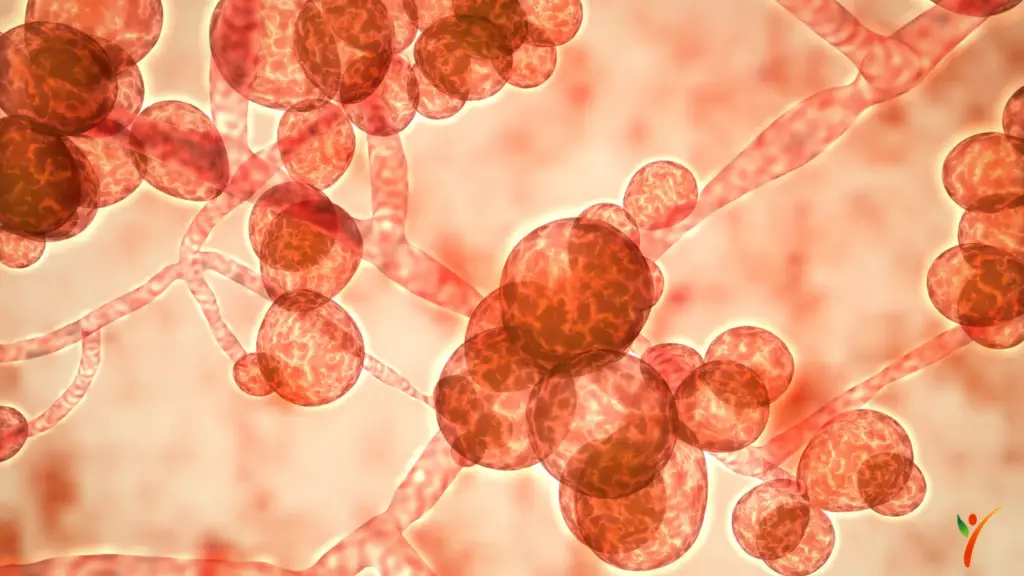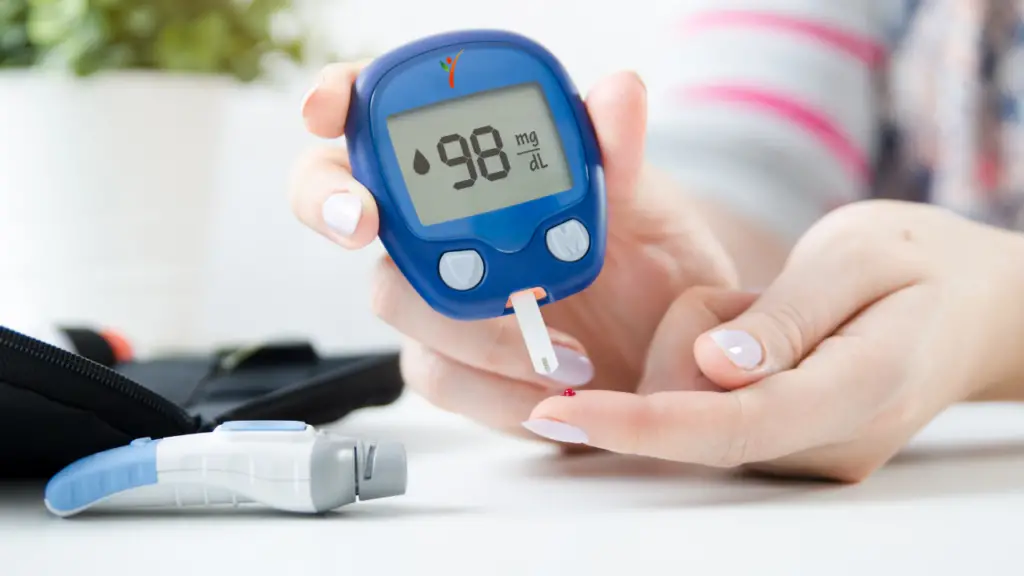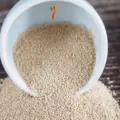Bacteria and fungi aren't enemies of the human body only acquired through the external environment. The body has millions of microorganisms living inside and on the surface of it. However, the body does ensure a balanced ecosystem for these microbes, and the slightest deviation can wreak havoc.
These microbes in small quantities are beneficial for the body, one of which includes yeast. But, those who have celiac disease or gluten sensitivity often complain about recurring yeast infections. So, is there a connection between gluten consumption and yeast infection? Let's find out!
What is a Yeast Infection?
Before going in-depth on whether gluten and yeast infections are connected, you'll first need to know the basics of yeast infection itself. The preliminary fungus responsible for yeast infections is Candida Albicans. It's commonly referred to as ‘yeast'; hence, the name yeast infection for the condition it causes.
Candida co-exists with numerous other microorganisms in the body. The body parts that typically host Candida are the skin, mouth, throat, and genital area. Besides keeping a balanced check on other microorganisms, Candida is also responsible for regulating body functions such as the digestive system, immune system, and nutrient absorption.

Now, the overgrowth of Candida sets a chain of events that can lead to several problems, one of which is a yeast infection. A yeast infection is the overgrowth of Candida, particularly in the genital area.
Both men and women are susceptible to yeast infections at any point in their lives. Therefore, vaginal yeast infections are more common than penile yeast infections. Studies state that three in four women will suffer from a yeast infection at least once in their lives- that's 75% of all women.
Common Causes of a Yeast Infection
The causes of yeast infection for both men and women are mostly similar. Usage of antibiotics, especially in long-term intake, is one primary cause. Antibiotics, as the name suggests, kills the bacteria in the body. Some of these bacteria prevent fungi overgrowth, such as Candida, the extensive production of which causes genital yeast infections.
Uncontrolled diabetes is another cause because of the spiking glucose levels in the blood. Increased sugar intake or glucose levels in the body are the primary food supply for yeast, enabling it to reproduce and spread. Thus, bringing us to our next cause, unhealthy eating habits. Eating foods that contain a high amount of sugar and processed carbs is another factor for yeast overgrowth.

Lastly, a weakened immune system because of age-factor, sickness, nutritional malabsorption, etc., can accelerate yeast overgrowth. A weak immune system cannot keep fungal growth in check due to a lack of proteins that ensure the balance. Without a proper assessment and balance system, yeast further reproduces in the body, which leads to yeast infections.
It is known that vaginal yeast infections have a higher chance of occurring due to pregnancy or hormonal changes in the body. Pregnancy and menstrual cycles disrupt the hormonal balance in the body, which keeps the pH levels constant. A fluctuation in the pH levels of the vagina provides the optimum condition for the yeast to overgrow.
Similarly, in men, lack of personal hygiene is another common cause of yeast infection. Anything that irritates the genital area or makes it moist can become the cause for Candida overgrowth.
Common Symptoms of a Yeast Infection

Yeast infection divides into vaginal and penile infections; we'll discuss the symptoms of both.
- Vaginal Yeast Infection: The most common symptoms of vaginal candidiasis are vaginal itching, vaginal swelling, burning sensation during urination or sexual intercourse, pain, soreness, redness, and rashes. In simple words, an itchy, uncomfortable vagina, along with the other symptoms, is a cause to raise red flags. Unnatural discharge appearance, i.e., odd colors and textures, also characterize yeast infection. However, this symptom varies from person to person. Some report a cottage cheese-like texture, while others state a white, sticky appearance. The discharge may also be odorless or with a faint distinguishable bread-like smell.
- Penile Yeast Infection: Like vaginal yeast infection, penile yeast infection is also noticeable if you're experiencing redness, itchiness, and pain. Symptoms include white patches or a thick white substance on the skin folds.
In both cases, it is crucial to visit a doctor as soon as possible. Some of these symptoms, such as redness, itchiness, and pain, are also symptoms of Sexually Transmitted Diseases (STDs) ‘s, which can become life-threatening.
On the flip side, yeast infections are treatable and don't pose any critical health risks. But, a doctor can accurately tell whether the symptoms you're suffering from are due to yeast infection or an STD.
Gluten & Yeast Infections- Are They Connected?

So, on to the subject of concern, what's with gluten intolerant individuals blaming gluten for repeated episodes of a yeast infection? Let's get facts out of the way- gluten itself is not a cause for yeast infections. However, certain factors linked with consuming gluten, especially on a gluten-free diet, might be the problem.
Gluten foods made from grains, such as wheat, barley, and rye, often have yeast in them too. Yeast gives foods the airy and spongey texture due to the production of CO2 gas needed for bread and other baked goods. Those with yeast allergies will need to avoid yeast-containing foods, and most of these make up the list of gluten-containing sources.
Does Gluten Cause Your Immune System To Weaken?

Gluten intolerance causes a weakened immune system. Since one of the pre-eminent reasons for yeast infection is a weakened immune system, existing gluten intolerance is a troublemaker for increasing yeast infections. The immune system of a person suffering from gluten intolerance is already weak and can't fight off an imbalanced yeast production in the body. Therefore, it won't be wrong to state that gluten doesn't cause yeast infections, but gluten intolerance is a potential culprit.
Individuals with celiac disease are also at a higher risk for other autoimmune diseases, including type 1 diabetes. Again type 1 diabetes is a cause for fluctuations in blood glucose level and glucose feeds yeast. A similar reason for yeast overgrowth in individuals is the consumption of gluten foods. Food sources with gluten have an increased amount of sugar and processed carbs. But, this doesn't mean that gluten-free foods do not have sugar and carbs in them. Therefore, you must opt for low-sugar and low-carb ingredients in your diet routine.
Lastly, there is an interlink between Candida allergy and gluten intolerance. In a yeast allergy, the body can't tolerate yeast. It kills the yeast, even the essential quantity required by the body, in the digestive tract. Thus, eliminating the chances of yeast infection. However, the protein structure of yeast and gluten particles are identical. A body that's intolerant to yeast will attack yeast and, in return, gluten particles. For this reason, those suffering from yeast allergy usually develop gluten intolerance alongside.
Final Words

Living a life with gluten intolerance or celiac disease can mean further complications, such as a yeast infection. The solution is to let the body heal by excluding any sources of gluten from your diet.
Consuming a healthy diet with less sugar and processed carbs content will keep the immune system healthy. As a result, it'll decrease the chances of yeast infections.





